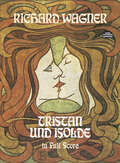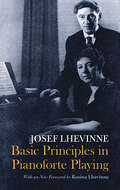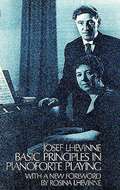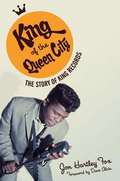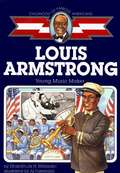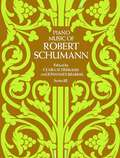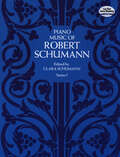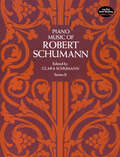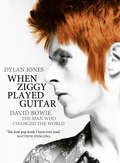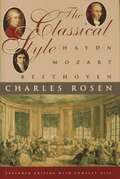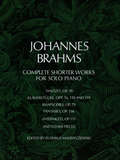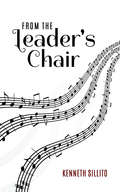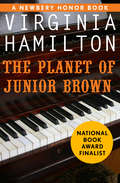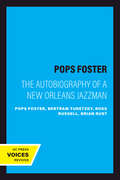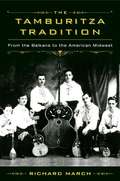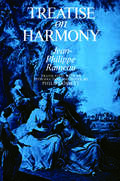- Table View
- List View
Toning: The Creative Power of the Voice
by Laurel Elizabeth KeyesToning is an ancient method of healing, which I hope will be recognized and used with new understanding now that we have more scientific explanations for it. It does not depend upon faith, nor belief in the method, any more than these are necessary to our use of electricity to provide light and energy in our daily living. There appear to be certain natural flows of energy in our bodies and if we recognize them and cooperate with them, they benefit us. Toning is not limited to one's religion, or lack of it. It does not require one's belief. Apparently it is not a "gift" but something available to anyone who goes through the mechanics of letting the voice express itself in a natural way. Anyone who can groan can Tone and experience its benefits. There is no mystery about Toning. It can be understood through material science, physiology and psychology as well as the most ancient concepts of man's relationship to his God. Please try it.
Tristan und Isolde in Full Score (Dover Opera Scores)
by Richard WagnerAmong musicologists and serious lovers of music, Wagner's Tristan und Isolde is generally considered the high point of orchestration in the musical tradition of nineteenth-century Europe. It shows in most successful form Wagner's unsurpassed gift for using the instruments of the orchestra, and generations of students have worked with it to learn its technique.Tristan und Isolde also has a remarkable historical position. It was the opera that most of the post-Wagnerians used to build upon, and it was also the opera that the anti-Wagnerians seized upon very frequently for their attacks and for their attempts to move musically away from Wagnerism. Accepted or rejected, it has been the work with which late nineteenth- and early twentieth-century musicians had to come to terms, and much musical history of this period can be understood through it.This edition reproduces the full orchestral score in a clear, modern engraving for easy reading and piano study, with large legible notation. Do not confuse this with a piano rendering; it is a full orchestral score. In addition to its obvious uses for study, this score is also an indispensable associate for anyone listening to recordings. In no other manner can the listener keep full awareness of the incredible orchestral richness of this opera.
Basic Principles in Pianoforte Playing (Dover Books on Music)
by Josef LhevinneThis little book, written at the height of his career by Josef Lhevinne, the "inward poet of the piano," is a clear statement of principles based on his lifelong experience in performance and teaching. Lhevinne was, with Rachmaninoff, Schnabel, and Hoffman, one of the great modern masters, and was the first artist invited to teach at the newly formed Julliard Graduate School of Music.Technique, through essential, must be subordinate to musical understanding. Complete knowledge of scales, apprehended not mechanically but musically; understanding of the uses of rests and silence, which Mozart considered the greatest effect in music; a feeling for rhythm and training of the ear; these are the basic elements of a thorough grounding in musicianship and are accordingly emphasized in the opening chapters.The heart of the book is devoted to the attainment of a beautiful tone. Anyone who has heard Lhevinne play or has listened to one of his recordings will know how great were his achievements in that area. The secret lay, at least in part, in the technique he called "the arm floating in air," and in the use of the wrists as natural shock absorbers. The achievement of varieties of tone, of the singing, ringing tone, of brilliancy, of delicacy, and of power are all explained in terms of a careful analysis of the ways in which the fingers, hand, wrist, arm, and indeed the whole body function in striking the keys. There are further remarks about how to get a clear staccato and an unblurred legato, about the dangers of undue emphasis on memorization and the need for variety in practicing, and special comments on the use of the pedal, which should be employed with as much precision as the keys.Throughout, specific musical examples are presented as illustrations. The author draws not only upon his own experiences and methods, but upon the examples of Anton Rubenstein and of his teacher, Safonoff, for this remarkably lucid and concise formulation of basic principles.
Basic Principles In Pianoforte Playing
by Josef LhevinneA 60-page booklet on Mr. Lhevinne's advice to piano students on the best methods of playing the piano. A classic for every serious piano student
The Church Cantatas of J. S. Bach
by Alec RobertsonFor nearly every Sunday from 1723 to 1728, J S Bach composed and his young orphan boy-students performed, a half-hour cantata in the Lutheran church services of the Saint Thomas Church in Leipzig, Germany. A cantata usually began with a chorus, contained recitatives (narrative) and arias (meditations) and closed with a hymn (chorale). Bach's cantatas contain more than 1500 movements, filling 67 compact discs in today's recordings. They contain dozens of magnificent choruses and hundreds of deeply-felt and spectacular arias and chorales. Alec Robertson analyzes 173 of Bach's roughly 210 extant cantatas. He organizes them according to the Lutheran church year, starting with Advent and ending with the Reformation Festival of October 30. He introduces each Sunday and feast day with the Biblical citations which were usually the basis for the cantatas. He discusses each movement, even listing the instrumentation. Bach's cantatas are at the pinnacle of western classical music. Not only do they give spiritual nourishment to Christians and non-Christians but they are studied the world over by amateur and professional musicians for their penetrating pictorialization, harmonizations, counterpoint and beautiful melodies. They contain great choruses, arias for all types of singers, plus some duets and trios. Whether you are an amateur or serious musician, this book will help you to understand and appreciate these works. Cantatas not discussed in this book are those intended for special occasions such as weddings, funerals, birthdays of prominent persons, civic events such as town council inaugurations, those with secular themes and those originally included in the Bach canon but which modern scholarship has determined not to have been his compositions (de-established). Accordingly, the following cantatas are not discussed: 11, 15 (deest.), 29, 50, 53 (deest), 54, 71, 97, 106, 117, 118, 119, 120, 131, 141 (deest.), 142 (deest.), 150, 160 (deest.), 189 (deest.), 191, 192, 193, 195, 196, 197, 198 and 200-215. In this braille file, German words are shown using Braille grade 2 English contractions. If you download the DAISY file, you will get the German words uncontracted. Note: an excellent internet source for all things Bach cantatas is http://bach-cantatas.com/ .
I'll Never Write My Memoirs
by Grace Jones Paul MorleyIconic music and film legend Grace Jones gives an in-depth account of her stellar career, professional and personal life, and the signature look that catapulted her into the stardom stratosphere. Grace Jones, a veritable “triple-threat” as acclaimed actress, singer, and model, has dominated the entertainment industry since her emergence as a model in New York City in 1968. Quickly discovered for her obvious talent and cutting-edge style, Grace signed her first record deal in 1977 and became one of the more unforgettable characters to emerge from the Studio 54 disco scene, releasing the all-time favorite hits, “Pull Up to the Bumper,” “Slave to the Rhythm,” and “I’m Not Perfect (But I’m Perfect for You). ” And with her sexually charged, outrageous live shows in the New York City nightclub circuit, Grace soon earned the title of “Queen of the Gay Discos. ” But with the dawn of the ’80s came a massive anti-disco movement across the US, leading Grace to focus on experimental-based work and put her two-and-a-half-octave voice to good use. It was also around this time that she changed her look to suit the times with a detached, androgynous image. In this first-ever memoir, Grace gives an exclusive look into the transformation to her signature style and discusses how she expanded her musical triumph to success in the acting world, beginning in the 1984 fantasy-action film Conan the Destroyer alongside Arnold Schwarzenegger, then the James Bond movie A View to a Kill, and later in Eddie Murphy’s Boomerang. Featuring sixteen pages of stunning full-color photographs, Miss Grace Jones takes us on a journey from Grace’s religious upbringing in Jamaica to her heyday in Paris and New York in the ’70s and ’80s, all the way to present-day London, in what promises to be a no holds barred tell-all for the ages.
King of the Queen City: The Story of King Records (Music in American Life)
by Dave Alvin Jon Hartley FoxKing of the Queen City is the first comprehensive history of King Records, one of the most influential independent record companies in the history of American music. Founded by businessman Sydney Nathan in the mid-1940s, this small outsider record company in Cincinnati, Ohio, attracted a diverse roster of artists, including James Brown, the Stanley Brothers, Grandpa Jones, Redd Foxx, Earl Bostic, Bill Doggett, Ike Turner, Roy Brown, Freddie King, Eddie Vinson, and Johnny "Guitar" Watson. While other record companies concentrated on one style of music, King was active in virtually all genres of vernacular American music, from blues and R & B to rockabilly, bluegrass, western swing, and country. A progressive company in a reactionary time, King was led by an interracial creative and executive staff that redefined the face and voice of American music as well as the way it was recorded and sold. Drawing on personal interviews, research in newspapers and periodicals, and deep access to the King archives, Jon Hartley Fox weaves together the elements of King's success, focusing on the dynamic personalities of the artists, producers, and key executives such as Syd Nathan, Henry Glover, and Ralph Bass. The book also includes a foreword by legendary guitarist, singer, and songwriter Dave Alvin.
Lean on Me: A Children's Picture Book (LyricPop #0)
by Bill WithersBill Withers's classic anthem to friendship lives on in this moving children's picture book adaptation. Lean on me When you’re not strong And I’ll be your friend I’ll help you carry on . . . Lean on Me is an endearing children's picture book that beautifully demonstrates the power of friendship, based on Bill Withers's classic song of the same name. “Lean on Me” appeared on Withers's 1972 album Still Bill. The song reached #1 on the Billboard Hot 100 chart and ranked #208 on Rolling Stone's "500 Greatest Songs of All Time" list. With Withers's lyrics and illustrations by Rachel Moss, this picture book follows four close friends through the stages of their childhood, from elementary school until their high school graduation. Withers’s classic and loving refrain serenades them as they lean arm-in-arm into adulthood.
Louis Armstrong: Young Music Maker (Childhood of Famous Americans Series)
by Dharathula H. MillenderA fictionalized biography of a trumpeter of humble origin who received international acclaim as a jazz entertainer.
Parents' and Teachers' Guide to Music Education
by Roberta MarkelPractical advice on choosing, selecting and buying an instrument, finding a good teacher, learning the language of music, singing, practicing, and careers in music
Piano Music of Robert Schumann, Series I (Dover Classical Piano Music)
by Robert Schumann Clara SchumannThis selection of Schumann's solo piano compositions contains all of his major work: "Variation über den Namen Abegg" (1830), "Papillons" (1832), "Studien nach Capricen von Paganini" (1832), "Davidsbundler" (1837), "Toccata" (1832), "Allegro" (1831), "Carnaval" (1834-5), "6 Concert-Etuden nach Capricen von Paganini" (1833), "Grosse Sonate No. 1" (1833-5), "Phanatasiestucke" (1937), "Grosse Sonate No. 3" (1835-6), "Kinderscenen" (1838), "Kreisleriana" (1838), "Arabeske" (1839), and "Blumenstück" (1839).This book has been especially designed as a playing edition -- the notes are large and easily readable at the piano, and the margins and spaces between staves are adequate for written notes, fingerings, and turnovers. It is also most useful for analysis.
Piano Music of Robert Schumann, Series I (Dover Classical Piano Music)
by Robert SchumannThis selection of Schumann's solo piano compositions contains all of his major work: "Variation über den Namen Abegg" (1830), "Papillons" (1832), "Studien nach Capricen von Paganini" (1832), "Davidsbundler" (1837), "Toccata" (1832), "Allegro" (1831), "Carnaval" (1834–5), "6 Concert-Etuden nach Capricen von Paganini" (1833), "Grosse Sonate No. 1" (1833–5), "Phanatasiestucke" (1937), "Grosse Sonate No. 3" (1835–6), "Kinderscenen" (1838), "Kreisleriana" (1838), "Arabeske" (1839), and "Blumenstück" (1839).This book has been especially designed as a playing edition — the notes are large and easily readable at the piano, and the margins and spaces between staves are adequate for written notes, fingerings, and turnovers. It is also most useful for analysis.
Piano Music of Robert Schumann, Series II (Dover Classical Piano Music)
by Robert Schumann Clara SchumannDover Publications continues its series of playing editions of musical masterpieces with this selection of Robert Schumann's later compositions for solo piano, edited by Clara Schumann. This second volume contains the major compositions from the period 1838-53: "Humoreske," "Novelletten," "Sonate No. 2," Nachtstücke," "Faschingsschwank aus Wien," "42 Clavierstücke für die Jugend," "4 Fugen," "Waldscenen," "Bunte Blätter," and "3 Clavier-Sonaten für die Jugend."This book has been especially designed as a playing edition -- the noteheads are large and easily readable at the piano, and the margins and spaces between staves are adequate for written notes, fingerings, and turnovers. It is also most useful for analysis or as accompaniment to recordings.
When Ziggy Played Guitar: David Bowie, The Man Who Changed The World
by Dylan JonesAnd then there was David Bowie, the uber-freak with the mismatched pupils, the low-tech space face from the planet Sparkle. This was Bowie's third appearance on TOTP but this was the one that properly resonated with its audience, the one that would go on to cause a seismic shift in the Zeitgeist. This is the performance that turned Bowie into a star, embedding his Ziggy Stardust persona into the nation's consciousness. With a tall, flame-orange cockade quiff (stolen from a Kansai Yamamoto model on the cover of Honey), lavishly applied make-up, white nail polish, and wearing a multi-coloured jump-suit that looked as though it were made from fluorescent fish skin (chosen by Ziggy co-shaper, the designer Freddie Buretti), and carrying a brand spanking new, blue acoustic guitar, a bone-thin Bowie appeared not so much as a pop singer, but rather as some sort of benevolent alien, a concept helped along by the provocative appearance of his guitarist, the chicken-headed Mick Ronson, with both of them unapologetically sporting knee-length patent leather wrestler's boots (Bowie's were red). 'Most people are scared of colour,' Bowie said later. 'Their lives are built up in shades of grey. It doesn't matter how straight the style is, make it brightly coloured material and everyone starts acting weird.' Suddenly Bowie - a man called alias - had the world at his nail-varnished fingertips, and in no time at all he would be the biggest star in the world.
The Beethoven Medal (Pennington #2)
by K. M. Peyton"There are plenty of nice steady boys you could go out with," her mother told her, but Ruth Hollis knew that beside Patrick other boys would seem insipid and dull. Ruth was quiet, but she had a streak of stubbornness in her nature, and she enjoyed a challenge. When she was younger and crazy about horses, she had always liked to ride the most difficult ponies; so perhaps it wasn't surprising that now, as a girl of sixteen, she should find herself involved with Patrick Pennington--a singularly complex, wild, and talented young man. Nevertheless, Ruth found herself wondering if this particular challenge was going to prove too much for her--with far-reaching consequences for herself and her family. K. M. Peyton, winner of the Carnegie Medal and the Guardian Award for her distinguished contribution to children's literature, has written a tender, funny, and convincing story of two very appealing young people on the verge of love.
The Classical Style: Haydn, Mozart, Beethoven
by Charles RosenThis book treating the three most beloved composers of the Vienna School is considered basic to any study of classical-era music. Drawing on his rich experience and intimate familiarity with the works of these giants, Charles Rosen presents his keen insights in clear and persuasive language.<P><P> Winner of the National Book Award
Complete Shorter Works for Solo Piano
by Johannes BrahmsThe entire corpus of Brahms's short piano pieces is contained in this volume: the delightful and familiar Waltzes; the effective Scherzo in E-flat Minor; the satisfying Eight Pieces; the two Rhapsodies; the Fantasies -- among the most perfectly finished works Brahms ever wrote -- the three Intermezzi; the Intermezzi, Ballade, and Romance comprising Six Pieces; and the superlative Intermezzi and Rhapsody that make up the final Four Pieces.The music is reproduced directly from the definitive Vienna Gesellschaft der Musik-freunde edition, edited by its renowned musicologist, Eusebius Mandyczewski, who made his revisions from original sources, often Brahms's own manuscripts. For this Dover edition, the Editor's Preface (Revisionsbericht) and the Table of Contents have been translated into English.Noteheads have been reproduced in a size large enough to be read easily at the keyboard. Margins and spaces between staves are generous, permitting insertion of written notes, analysis, fingertips, running measure numbers, etc. This edition will be welcomed, not only by the classical pianist, but by all who will find it highly practical and convenient for instruction, study, reference, enjoyment, and virtually any other purpose.
From the Leader's Chair
by Kenneth SillitoKenneth Sillito is internationally recognised as one of Britain's most distinguished musicians. Born in Newcastle-upon-Tyne, he studied with David Martin at the Royal Academy of Music, and in Rome with Remy Principe. His first major appointment was as associate leader of the newly created English Chamber Orchestra in 1960. He was subsequently appointed leader and remained with the orchestra until 1973, during which time he established a worldwide reputation as both director and soloist. In 1967, he founded the Gabrieli String Quartet, which swiftly established itself as one of this country's leading chamber ensembles. With the Academy of St Martin-in-the-Fields, which he joined in l980, Kenneth led and directed innumerable distinguished recordings and performances until his retirement in 2012. He was made a Fellow of the Royal Academy in 1971 and awarded the highly prestigious Cobbett Medal in 2017 by The Worshipful Company of Musicians for his services to chamber music.
The Planet of Junior Brown: Zeely / The House Of Dies Drear / The Planet Of Junior Brown / M. C. Higgins, The Great / Sweet Whispers, Brother Rush
by Virginia HamiltonJunior Brown is a musical prodigy losing touch with reality and everyone around him—except for one important friend Junior Brown is different than the other kids in his eighth-grade class. For one, he weighs three hundred pounds. He&’s also a talented musician with a serious future as a professional pianist—if he survives middle school. With an overbearing mom, disappointed teachers, and fellow students who tease him mercilessly, Junior starts to slip away into his own mind. His last hope may be his only friend, Buddy Clark, a boy in his class without a home or family who has already learned some of life&’s toughest lessons.
Pops Foster: The Autobiography of a New Orleans Jazzman
by Pops FosterThis title is part of UC Press's Voices Revived program, which commemorates University of California Press’s mission to seek out and cultivate the brightest minds and give them voice, reach, and impact. Drawing on a backlist dating to 1893, Voices Revived makes high-quality, peer-reviewed scholarship accessible once again using print-on-demand technology. This title was originally published in 1971.This title is part of UC Press's Voices Revived program, which commemorates University of California Press’s mission to seek out and cultivate the brightest minds and give them voice, reach, and impact. Drawing on a backlist dating to 1893, Voices Revived</DIV
The Tamburitza Tradition
by Richard March"The Tamburitza Tradition" is a lively and well-illustrated comprehensive introduction to a Balkan folk music that now also thrives in communities throughout Europe, the Americas, and Australia. Tamburitza features acoustic stringed instruments, ranging in size from tamburas as small as a ukulele to ones as large as a bass viol. Folklorist Richard March documents the centuries-old origins and development of the tradition, including its intertwining with nationalist and ethnic symbolism. The music survived the complex politics of nineteenth-century Europe but remains a point of contention today. In Croatia, tamburitza is strongly associated with national identity and supported by an artistic and educational infrastructure. Serbia is proud of its outstanding performers and composers who have influenced tamburitza bands on four continents. In the United States, tamburitza was brought by Balkan immigrants in the nineteenth century and has become a flourishing American ethnic music with its own set of representational politics. Combining historical research with in-depth interviews and extensive participant-observer description, "The Tamburitza Tradition" reveals a dynamic and expressive music tradition on both sides of the Atlantic and beyond, illuminating the cultures and societies from which it has emerged.
Treatise on Harmony (Dover Books On Music: Analysis)
by Jean-Philippe RameauThe Traité de l'harmonie of Jen-Philippe Rameau is one of the most important books in the history of Western music. Written while Rameau was still a relatively obscure organist and music master at Clermont-Ferrand, the book received but one printing during Rameau's life, in 1722, shortly before he settled in Paris. The Traité was immediately recognized as a profound advance in musical theory, however, and it established Rameau's reputation as a theorist. His book was the first to codify those principles of tonality that were to dominate the music of the West for almost two centuries. Even today the theories of Rameau remain the basis for the study of harmony.Rameau's Traité de l'harmonie is divided into four books, the first of which presents the mathematical basis from which Rameau sought to derive his theories. Book Two may be considered the most important section of the Traité; in it Rameau generates his entire harmonic system from fundamental principles, explaining intervals, chords, and modes -- everything, in fact, essential to musical composition in tonal style. Working from the principles developed in Books One and Two, Book Three treats the practical rules of composition, including such topics as harmonic modulation and chord progressions. Book Four concerns the practical art of accompaniment on harpsichord or organ, including the realization of a figured bass. Corrections added by Rameau in a supplement are included in the text, and all the musical examples have been reset in modern musical notation. In addition, two pages from a unique copy of the first issue of the first edition are given in facsimile. The translator's introduction discusses the history of the work, Rameau's mathematics, and his place in the history of music theory.
Violin: An Introduction To The Instrument
by William BallantineA beginner's guide to the violin. Among other topics, this book describes the history of the violin, how violins are made, and how they are used in different musical genres.
العقيدة الواسطية
by ابن تيميةهذا اعتقاد الفرقة الناجية المنصورة إلى قيام الساعة، أهل السنة والجماعة، وهو الإيمان بالله وملائكته وكتبه ورسله والبعث بعد الموت والإيمان بالقدر خيره وشره. ـ ومن الإيمان بالله الإيمان بما وصف به نفسه في كتابه وبما وصفه به رسوله محمد صلى الله عليه وسلم من غير تحريف ولا تعطيل، ومن غير تكييف ولا تمثيل ، بل يؤمنون بأن الله سبحانه ليس كمثله شيء وهو السميع البصير. فلا ينفون عنه ما وصف به نفسه ولا يحرفون الكلم عن مواضعه، ولا يلحدون في أسماء الله وآياته ، ولا يكيفون ولا يمثلون صفاته بصفات خلقه لأنه سبحانه لا سميّ له، ولا كُفُوَ له، ولا نِدَّ له ، ولا يقاس بخلقه سبحانه وتعالى فإنه أعلم بنفسه وبغيره، وأصدق قيلا وأحسن حديثا من خلقه. ـ ثم رسله صادقون مصدوقون، بخلاف الذين يقولون عليه ما لا يعلمون، ولهذا قال: {سبحان ربك رب العزة عما يصفون ، وسلام على المرسلين ، والحمد لله رب العالمين} فسبح نفسه عما وصفه به المخالفون للرسل ، وسلم على المرسلين لسلامة ما قالوه من النقص والعيب. ـ وهو سبحانه قد جمع فيما وصف وسمىَّ به نفسه بين النفي والإثبات، فلا عدول لأهل السنة والجماعة عما جاء به المرسلون. فإنه الصراط المستقيم، صراط الذين أنعم الله عليهم من النبيين والصديقين والشهداء والصالحين. ـ وقد دخل في هذه الجملة ما وصف به نفسه في سورة الإخلاص التي تعدل ثلث القرآن حيث يقول: {قل هو الله أحد ، الله الصمد، لم يلد ، ولم يولد ، ولم يولد ، يكن له كفواً أحد} وما وصف به نفسه في أعظم آية في كتابه، حيث يقول: {الله لا إله إلا هو الحي القيوم، لا تأخذه سنة ولا نوم، له ما في السماوات وما في الأرض، من ذا الذي يشفع عنده إلا بإذنه، يعلم ما بين أيديهم وما خلفهم ولا يحيطون بشيء من علمه إلا بما شاء، وسع كرسِيه السماوات والأرض ولا يؤوده حفظهما - أي لا يَكْرِثه ولا يُثْقِلُه - وهو العلي العظيم} ولهذا كان من قرأ هذه الآية في ليلة لم يزل عليه من الله حافظ ولا يقربه شيطان حتى يصبح .
بداية الهداية
by ابن حامد محمد الغزالي الطوسي الشافعياعلم أن أوامر الله تعالى فرائض ونوافل ، فالفرض: رأس المال وهو أصل التجارة وبه تحصل النجاة ، والنفل: هو الربح وبه الفوز بالدرجات قال صلى الله عليه وسلم: (يقول الله تبارك وتعالى: ما تقرب إلي المتقربون بمثل أداء ما افترضت عليهم ، ولا يزال العبد يتقرب إلى بالنوافل حتى أحبه ، فإذا أحببته كنت سمعه الذي يسمع به ، وبصره الذي يبصر به ، ولسانه الذي ينطق به ، يده التي يبطش بها ، ورجله التي يمشي عليها) ، ولن تصل أيها الطالب إلى القيام بأوامر الله تعالى إلا بمراقبة قلبك وجوارحك في لحظاتك وأنفاسك حين تصبح إلى حين تمسى. فاعلم أن الله تعالى مطلع على ضميرك ، ومشرف على ظاهرك وباطنك ومحيط بجميع لحظاتك وخطراتك وخطواتك ، وسائر سكناتك وحركاتك ، وأنك في مخالطتك وخلواتك متردد بين يديه فلا يسكن في الملك والملكوت ساكن ، ولا يتحرك متحرك إلا وجبار السموات والأرض مطلع عليه يعلم خائنة الأعين وما تخفي الصدور ويعلم السر وأخفى. فتأدب أيها المسكين ظاهرا وباطنا بين يدي الله تعالى تأدب العبد الذليل المذنب في حضرة الملك الجبار القهار ، واجتهد ألا يراك مولاك حيث نهاك ولا يفقدك حيث أمرك ، ولن تقدر على ذلك إلا بأن توزع أوقاتك وترتب أورادك من صباحك إلى مسائك. فاصغ إلى ما يلقى إليك من أوامر الله تعالى عليك من حين تستيقظ من منامك إلى وقت رجوعك إلى مضجعك.

